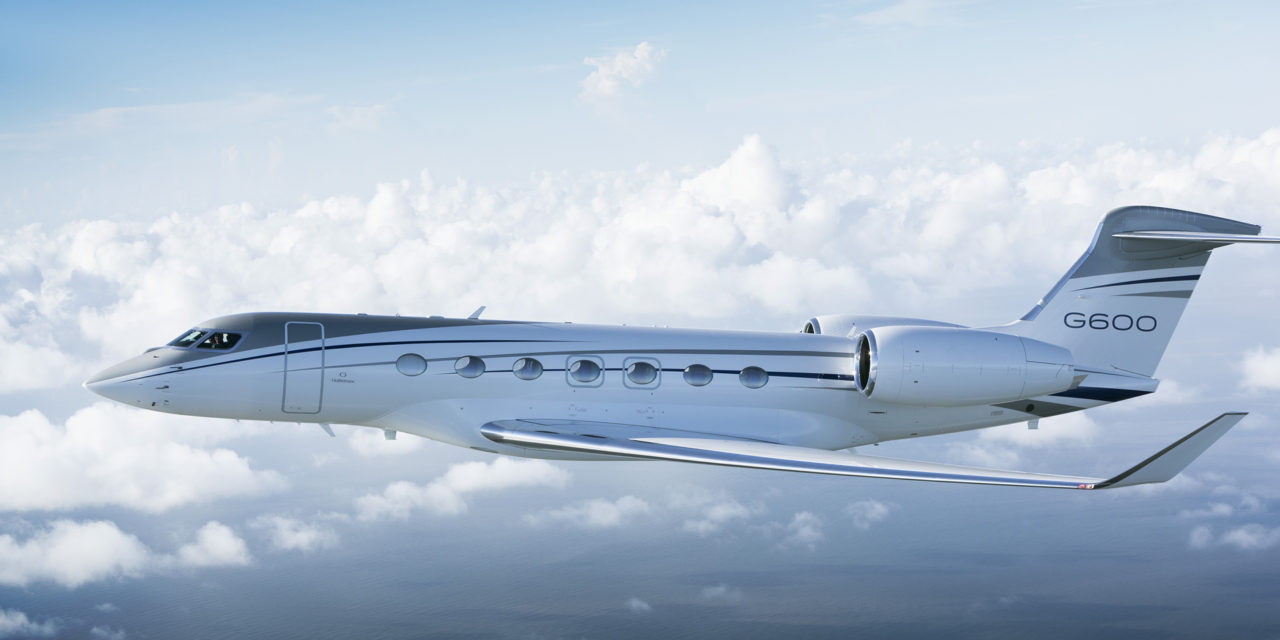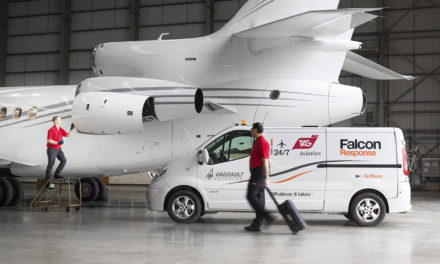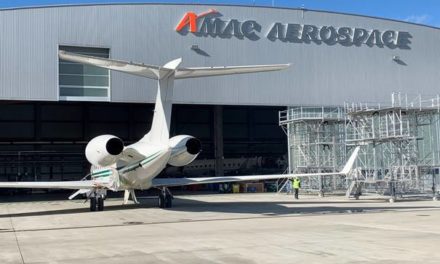Gulfstream Aerospace announced during NBAA a second range increase for its all-new Gulfstream G600 business jet. The award-winning aircraft will deliver 5,500 nautical miles/10,186 kilometers of range at its high-speed cruise of Mach 0.90, a 700-nm/1,296-km increase over original projections.
“The incredible high-speed performance of the G600 is a testament to our engineering and design teams,” said Mark Burns, president, Gulfstream. “As part of our continuous improvement culture, they have enhanced this aircraft’s capabilities, ensuring we continue to best our customer’s expectations. We started with a range projection of 4,800 nautical miles at Mach 0.90, increased that to 5,100 nautical miles in 2017 and are now at 5,500 — proving once again that delivering more than we promised is a Gulfstream tradition.”
With its range increase, the G600 can now fly nonstop from London to Los Angeles, São Paulo to Aspen or Hong Kong to Vienna at Mach 0.90. The G600 can travel 6,500 nm/12,038 km at its long-range cruise speed of Mach 0.85. The maximum operating speed for the aircraft is Mach 0.925.
Since December 2016, the five aircraft in the G600 flight-test program have accumulated more than 2,600 flight hours over more than 685 flights. The aircraft is nearing the end of its flight test and certification program, with only crew workload, flight into known icing and function and reliability tests remaining.
The other aircraft Gulfstream launched simultaneously four years ago, the Gulfstream G500, earned its type and production certificates from the U.S. Federal Aviation Administration on July 20, 2018, and is now awaiting type certification from the European Aviation Safety Agency. The first G500 entered service Sept. 27.
“The Gulfstream G600 continues to leverage its extensive commonality with the G500,” Burns said. “Lessons learned on the G500 have enabled us to move with more efficiency through the same tests for the G600.”
The G600 recently completed certification testing for flying qualities; engine and thrust reverser operations; ice protection and environmental control system; field performance; smoke evacuation; flight controls; ventilation and cooling; fuel system and flammable fluid drainage.









